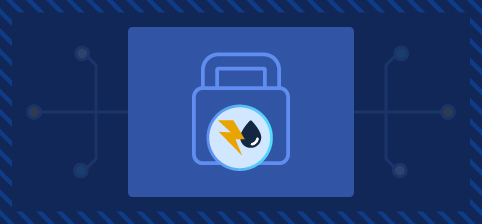After the ransomware attack on Colonial Pipeline in 2021 and other notable events, the presidential administration has diligently worked to improve the cybersecurity posture of critical infrastructure in the United States. Several Government agencies, such as the Department of Energy (DOE) Cybersecurity, Energy Security and Emergency Response (CESER), the National Security Agency (NSA), Cybersecurity Infrastructure Security Agency (CISA), and private sector Electric & Utility Industry have joined to refine and boost cybersecurity in the Electric and Utilities sector.
Standards for the Electric and Utility Sector
Since 2021, the White House has put forth the National Security Memorandum on Improving Cybersecurity for Critical Infrastructure Control Systems, an initiative that aims to safeguard the critical infrastructure of the nation. The Memorandum specifies that the Electricity Subsector was the pilot effort in its Initiative. In acknowledgement of the Memorandum, at least 150 electric utilities have or will adopt operational technology (OT) and Industrial Control Systems (ICS) security and improved the visibility, detection and monitoring of critical electricity networks. Further reinforcing the memo, in March of 2023, the Presidential Administration announced a national cybersecurity strategy that strives to create a secure digital ecosystem reinforced with the National Cybersecurity Strategy.
Control systems experts that work with DOE CESER, CISA and the NSA have developed a set of ICS security considerations. These considerations aim to enhance and monitor the detection, mitigation and forensic capabilities for OT owners and operators.
The ICS/OT cybersecurity evaluating and monitoring technology guidelines are recommendations rather than mandates. They include but are not limited to:
- Building technology for ICS networks with integration compatibility for ICS protocols and communications
- Adding sensor-based continuous network cybersecurity monitoring, detection and facilitation of response capabilities for both ICS and OT
- Creating a collective defense capability framework for software so that Federal Government partners and trusted organizations can share insights and detections
- Utilizing passive deployment and isolation technologies to protect sensitive information
- Securing technology against access credential misuse[1]
These guidelines aim to improve system security and visibility with Government partners.
 Financing the Security Movement
Financing the Security Movement
To help fulfill the National Security Memorandum promise, the current administration has released the Bipartisan Infrastructure Law, which authorizes up to $250 million to enhance the cybersecurity resilience of rural, municipal, and small private electric utilities. The Rural and Municipal Utility Advanced Cybersecurity Grant and Technical Assistance (RMUC) Program has utilized the law to help improve energy systems, processes, assets, incident response and cybersecurity skills in eligible agencies within the utility workforce. Nearly one in six Americans live in remote or rural communities with inadequate funding and infrastructure for updated technology and modern systems.[2] The RMUC Program pledges financial and technical assistance to help these communities, as well as small investor-owned electric utilities, to improve vital security functions such as operational capabilities and to provide cybersecurity services access and threat-sharing programs. In August 2023, the program pledged a prize pool of $8.96 million dollars in competitive funding and technical assistance to enable municipal and small investor-owned utilities to advance their training and cybersecurity.[3]
By ensuring secure and reliable power to all customers, RMUC will help finance cybersecurity, as well as help fulfill another of the current administration’s goals of a net-zero carbon economy by 2050.
Cleaning Up Energy
In developing the clean energy sector, the Administration aims to mold the digital ecosystem to be more defensible, resilient and aligned with American values. This strategy will invest in the future by defending the energy sector and reinforcing clean-energy critical infrastructures.[4] To aid in the battle for clean energy through cybersecurity innovation, Clean Energy Cybersecurity Accelerator (CECA) will make cybersecurity accessible via collaboration with public and private expertise. To do so, CECA will assess all ICS assets that are connected to a utility’s infrastructure. Any ICS with potential wide-reaching impact is evaluated against physical and virtual attacks in a test lab, allowing CECA to mend any security holes. Aiming to achieve carbon-free electricity by 2035, the DOE has announced hundreds of funding opportunities, including funding for the Fossil Energy and Carbon Management (FECM) office.[5]
Through the collaboration of several key Government agencies and the tech industry, the Electric and Utilities sector is on the way to being secure, reliable and accessible to all.
The first two parts of this four-part blog series covered the basics of critical infrastructure cybersecurity, as well as an overview of the Water and Wastewater Sector. Following this third part, the fourth and final blog will dive deeper into the Transportation sector.
To learn more about how agencies can bolster their cybersecurity efforts within critical infrastructure, visit Carahsoft’s Cybersecurity Solutions Portfolio.
Sources
[1] “Considerations for ICS/OT Cybersecurity Monitoring Technologies,” Office of Cybersecurity, Energy Security and Emergency Response, https://www.energy.gov/ceser/considerations-icsot-cybersecurity-monitoring-technologies
[2] “Biden-Harris Administration Launches $250 Million Program to Strengthen Energy Security for Rural Communities,” Department of Energy, https://www.energy.gov/articles/biden-harris-administration-launches-250-million-program-strengthen-energy-security-rural
[3] “New Prize Supports Rural and Municipal Utilities in Strengthening Cybersecurity Posture,” NREL, https://www.nrel.gov/news/program/2023/new-prize-supports-rural-and-municipal-utilities-in-strengthening-cybersecurity-posture.html
[4] “Fact Sheet: Biden-Harris Administration Announces National Cybersecurity Strategy,” The White House, https://www.whitehouse.gov/briefing-room/statements-releases/2023/03/02/fact-sheet-biden-harris-administration-announces-national-cybersecurity-strategy/
[5] “Funding Notice: Critical Materials Innovation, Efficiency and Alternatives,” Energy.gov: Office of Fossil Energy and Carbon Management, https://www.energy.gov/fecm/funding-notice-critical-materials-innovation-efficiency-and-alternatives







